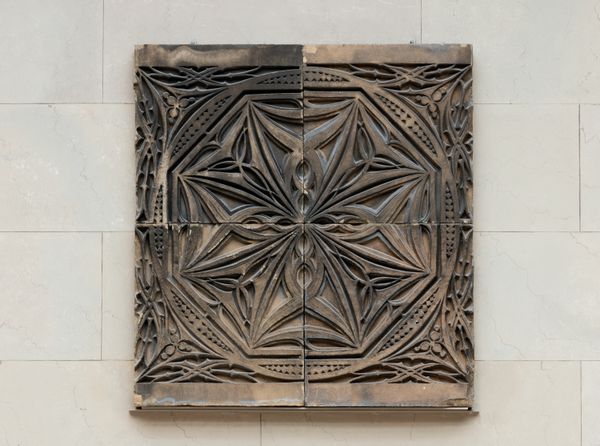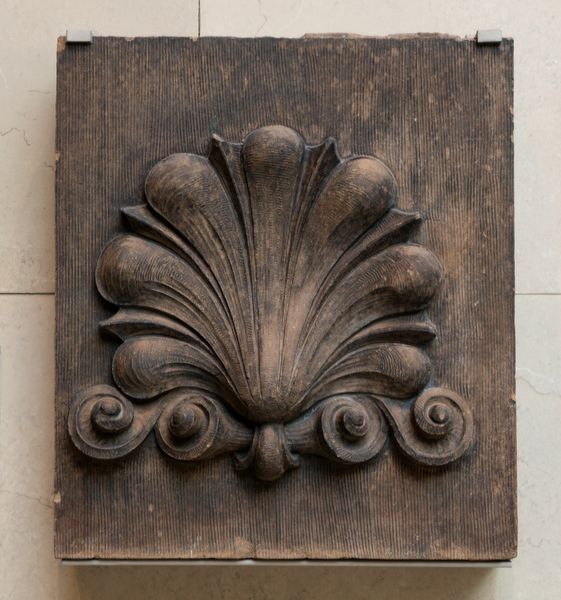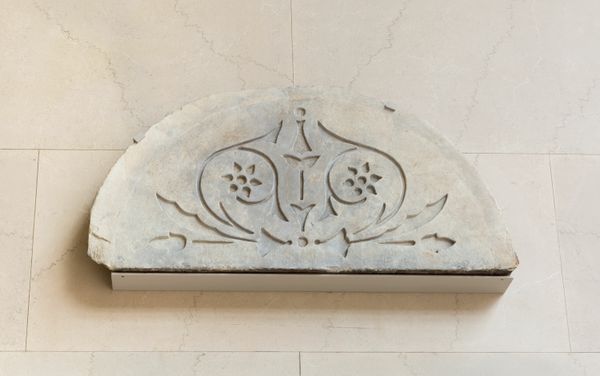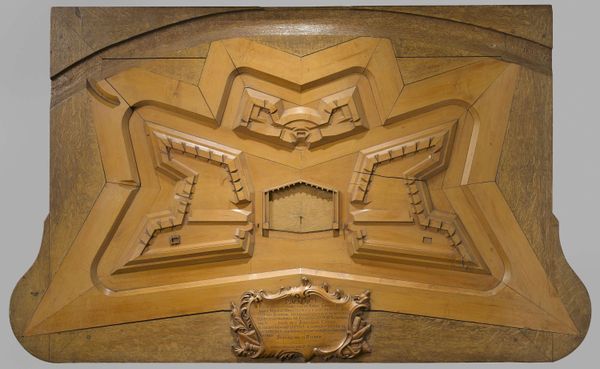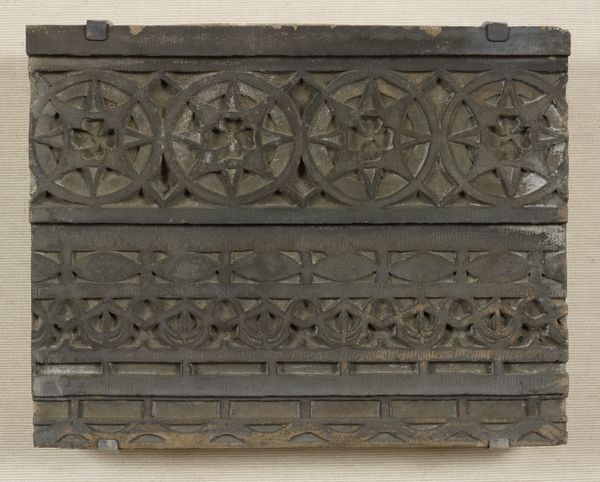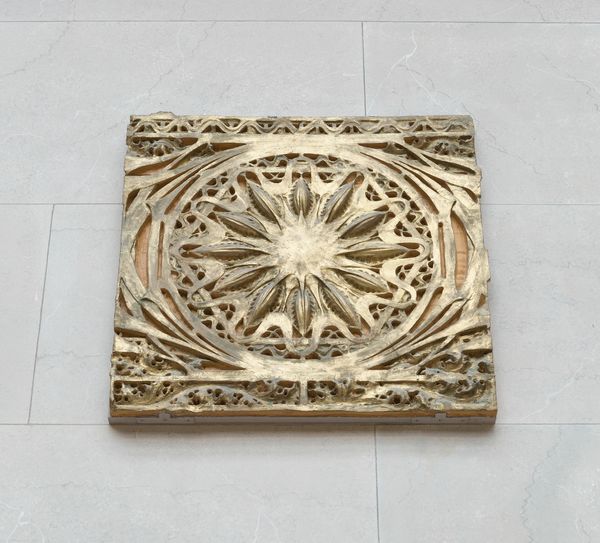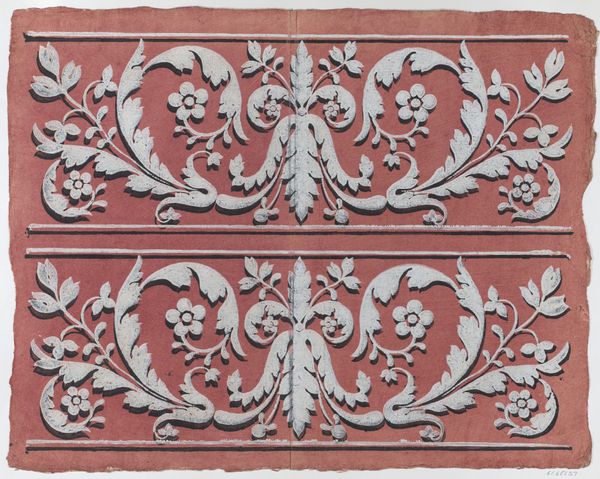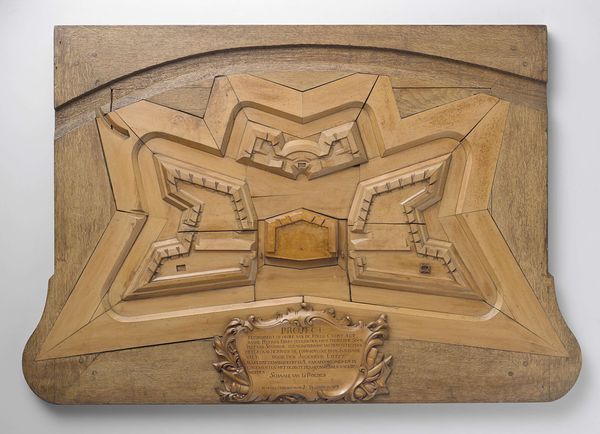
Garrick Theatre: Block of stringcourse from first floor loggia Possibly 1891 - 1961
0:00
0:00
Dimensions: 91 × 49 × 20.5 cm
Copyright: Public Domain
Editor: So, this is a block of stringcourse from the Garrick Theatre, designed by Adler and Sullivan, possibly dating back to 1891. It's made of marble and features a really interesting relief carving. I find the repetitive nature of the design quite soothing, but also, maybe a little unsettling. What do you see in this piece? Curator: The unsettling quality you pick up on is key. This isn't just decorative; it speaks to the tension between industrialization and the desire for organic beauty in the late 19th century. Note how the Art Nouveau style, with its flowing lines, is constrained within this rigid architectural block. Where do we locate that struggle? Editor: I suppose the geometry tries to contain it somehow, like trying to control nature, perhaps? Curator: Exactly. This tension between nature and industrial constraint reflects broader anxieties of the time period. The carving’s repetitive nature reminds us of mechanization and its effect on individual expression. Editor: So, is the block then, not merely ornamentation, but also commentary on societal shifts? Curator: Precisely! Sullivan's ornament always aims for that synthesis between beauty and function while commenting on the state of culture. It challenges us to see the relationship between progress, industrial work and our collective sense of beauty. In fact, consider the destruction of the Garrick Theatre as representative of ruthless capitalism disregarding art, so that the redisplaying of salvaged artifacts such as this acquires new meaning. Editor: Wow, I never thought of it that way. It makes me appreciate the piece, and also be aware of the context surrounding its creation and rediscovery. Curator: These surviving pieces carry profound meaning by exemplifying resistance. Every curve is not just beautiful; it’s a statement. We can use these forms to examine these societal pressures still occurring today.
Comments
No comments
Be the first to comment and join the conversation on the ultimate creative platform.
